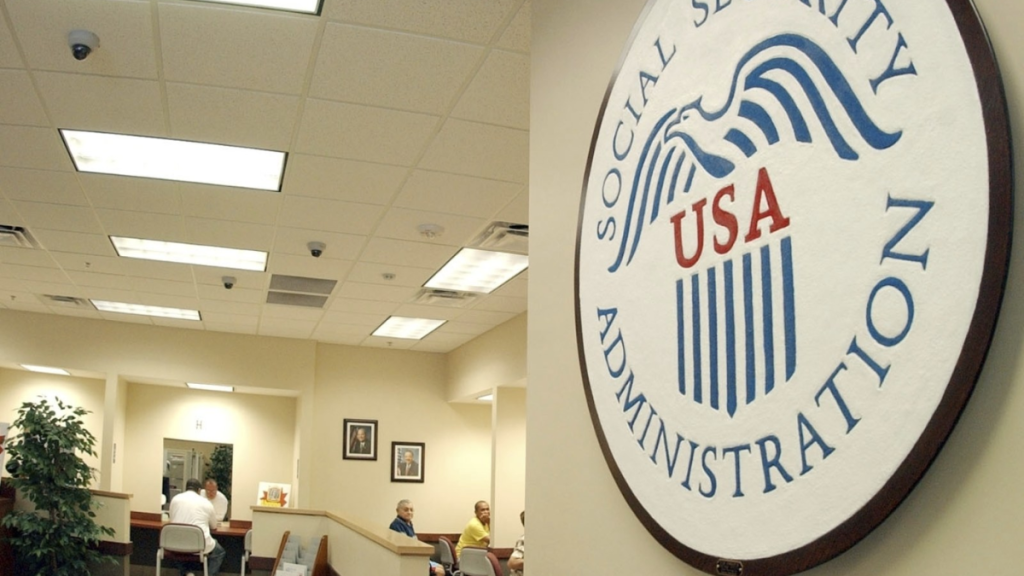WASHINGTON, D.C. —Social Security, one of the most relied-upon programs in the United States, is quickly approaching a financial crossroads. For decades, the program has served as the main source of income for millions of retirees, people with disabilities, and survivors of deceased workers.
However, new projections show that unless Congress takes timely and significant action, the program will no longer be able to pay full benefits by 2035.
According to the 2024 Social Security Trustees Report, the combined trust funds for Old-Age and Survivors Insurance (OASI) and Disability Insurance (DI) are expected to be depleted by 2035. After that point, the program will only be able to pay approximately 83% of scheduled benefits.
This forecast has sparked major conversations in Congress and across the country about the kinds of reforms that are needed to preserve Social Security for future generations.
Why Social Security Is in Trouble
The Social Security program is primarily funded by payroll taxes collected under the Federal Insurance Contributions Act (FICA). Workers and their employers each contribute 6.2% of wages, up to a maximum taxable income amount, which is set at $168,600 in 2025. Self-employed workers pay the full 12.4% themselves.
For many years, the Social Security system took in more money than it paid out. Those surpluses were placed into trust funds. But now, with Americans living longer and birth rates declining, the system is strained. There are fewer workers paying into Social Security for each person receiving benefits. The result is that outflows are beginning to exceed inflows.
The Social Security Administration (SSA) has confirmed that the OASI Trust Fund will be exhausted by 2033, while the DI fund has a slightly longer timeline. Combined, both funds are projected to run out by 2035 unless Congress intervenes. For more detailed information, the full Trustees Report can be found at the SSA’s official site.
What Reforms Are Being Proposed?
There are several key proposals under consideration in Washington to address the projected shortfall. These options fall into three main categories: raising revenue, reducing benefits, or altering the eligibility age.
1. Raising the Full Retirement Age
Some lawmakers have proposed raising the full retirement age beyond the current 67. This would reflect increased life expectancies and reduce the total number of years people collect benefits.
However, critics argue this change would disproportionately impact workers in physically demanding or lower-paying jobs who may not be able to delay retirement.
2. Eliminating or Raising the Payroll Tax Cap
Currently, only income up to $168,600 is taxed for Social Security. Any earnings above that amount are not subject to the payroll tax.
Proposals to eliminate or raise this cap could significantly boost Social Security’s finances. Supporters say this would make the system fairer, while opponents argue it could discourage economic growth.

3. Altering Cost-of-Living Adjustments (COLAs)
Social Security benefits are adjusted annually based on inflation. Some have suggested switching from the traditional Consumer Price Index for Urban Wage Earners (CPI-W) to the CPI-E, which is tailored to seniors’ spending habits.
While this change could increase benefits slightly, it could also raise long-term program costs.
4. Means Testing Benefits
Another controversial idea is means testing—reducing or eliminating benefits for higher-income retirees. This would help preserve funds for lower-income individuals but could transform Social Security from a universal benefit into a needs-based program.
Who Will Be Affected?
If no reforms are passed before 2035, the SSA estimates that all beneficiaries would face a 17% cut in their monthly payments. This includes:
- Retirees who depend on Social Security for basic living expenses.
- Disabled Americans receiving Social Security Disability Insurance (SSDI).
- Survivors of deceased workers who count on benefits.
- Future generations, especially younger workers who may face higher taxes or lower benefits.
What Can Individuals Do?
While much of the debate is in the hands of lawmakers, there are steps individuals can take to prepare for potential changes:
- Stay informed through credible sources like ssa.gov and USA.gov.
- Boost personal savings by contributing to retirement accounts such as a 401(k) or IRA.
- Meet with a financial advisor to understand how different reform scenarios could impact your financial future.
- Get politically involved by reaching out to your congressional representatives and voicing your opinion on Social Security legislation.
Political Outlook for Reform
Despite growing concern, Congress remains divided on how to fix Social Security. Democrats have generally supported increasing taxes on higher earners to preserve or expand benefits, while Republicans have favored measures like raising the retirement age or changing benefit formulas.
Recent proposals, such as the Social Security 2100 Act, aim to stabilize the program for decades by raising the payroll tax cap and making modest benefit increases. However, the bill has yet to gain the bipartisan momentum needed to pass.
With 2035 fast approaching, many experts believe that the longer Congress waits, the more severe the changes will need to be.
Conclusion
Social Security is not going bankrupt, but it is undeniably heading toward a funding crisis. Without timely intervention, beneficiaries could face across-the-board cuts in just a decade.
Whether through tax reforms, age adjustments, or changes to benefits, Congress must act soon to safeguard the future of a program that millions of Americans rely on.
Staying informed and prepared is the best defense for individuals facing an uncertain retirement future.
Disclaimer – Our team has carefully fact-checked this article to make sure it’s accurate and free from any misinformation. We’re dedicated to keeping our content honest and reliable for our readers.
